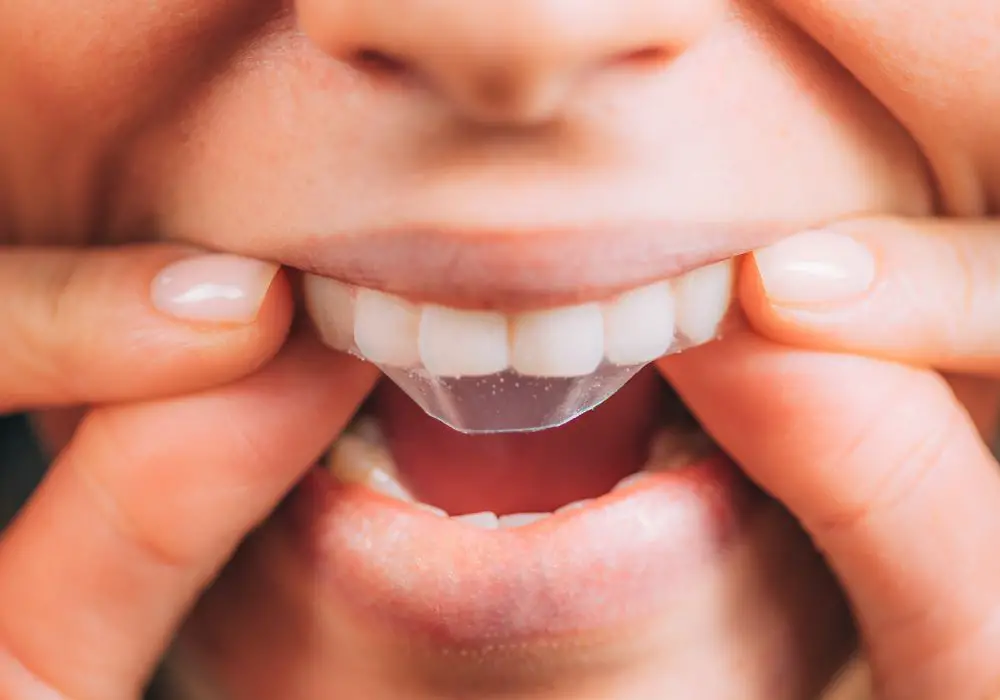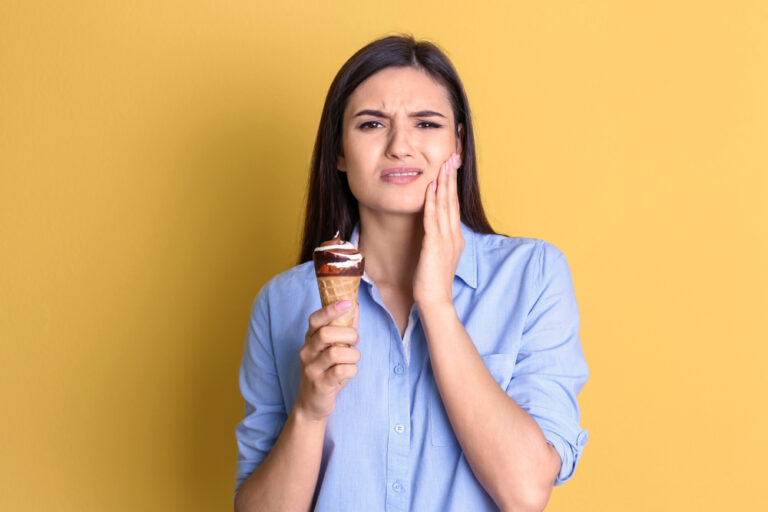Are teeth strips worth it? This is a question that many people ask themselves when considering teeth whitening options. With so many products on the market, it can be difficult to decide which one is right for you. Teeth strips are a popular choice for those looking to brighten their smile, but are they really worth the investment?
Teeth strips are a convenient and affordable way to whiten your teeth at home. They are easy to use and can produce noticeable results in just a few days. However, it’s important to note that not all teeth strips are created equal. Some may contain harsh chemicals that can damage your teeth and gums, while others may not be strong enough to produce the desired results. So, before you invest in teeth strips, it’s important to do your research and choose a product that is safe and effective.
Understanding Teeth Whitening Strips

If you’re looking for a simple and affordable way to whiten your teeth, teeth whitening strips may be a good option for you. These strips are a popular over-the-counter teeth whitening method that can be used at home. However, before you use them, it’s important to understand how they work and what ingredients they contain.
How Teeth Whitening Strips Work
Teeth whitening strips are made from a thin, flexible plastic material that is coated with a gel containing a bleaching agent such as hydrogen peroxide or carbamide peroxide. When you apply the strips to your teeth, the gel comes into contact with the surface of your teeth and begins to break down the stains that have accumulated over time.
The bleaching agent in the gel works by penetrating the enamel of your teeth and breaking down the stains that have accumulated over time. As the stains are broken down, your teeth become whiter and brighter. The length of time you need to use the strips will depend on the strength of the gel and the severity of the stains on your teeth.
Ingredients in Teeth Whitening Strips
The active ingredient in most teeth whitening strips is either hydrogen peroxide or carbamide peroxide. These bleaching agents work by breaking down the stains on your teeth, leaving them whiter and brighter.
However, it’s important to note that some people may be sensitive to these ingredients and experience side effects such as tooth sensitivity or gum irritation. If you experience any discomfort while using teeth whitening strips, it’s important to stop using them and consult with your dentist.
In addition to the active bleaching agent, teeth whitening strips may also contain other ingredients such as glycerin, water, and flavorings to help improve the taste and texture of the strips.
Overall, teeth whitening strips can be an effective and affordable way to whiten your teeth at home. However, it’s important to understand how they work and what ingredients they contain before using them. If you have any concerns about using teeth whitening strips, it’s always best to consult with your dentist first.
Benefits of Using Teeth Whitening Strips
Teeth whitening strips have become a popular option for those looking to brighten their smile. Here are some of the benefits of using teeth whitening strips:
Convenience and Ease of Use
One of the biggest advantages of using teeth whitening strips is their convenience and ease of use. Unlike other teeth whitening methods, such as in-office treatments or custom-fitted trays, whitening strips can be used at home at your own convenience. Simply apply the strips to your teeth for the recommended amount of time, and then remove them. It’s that easy!
Another advantage of using teeth whitening strips is that they can be used on the go. If you have a busy schedule, you can easily take the strips with you and use them whenever you have a free moment. This makes them a great option for those who want to whiten their teeth but don’t have a lot of time to spare.
Affordability
Another benefit of using teeth whitening strips is their affordability. In-office teeth whitening treatments can be expensive, and custom-fitted trays can also be costly. Teeth whitening strips, on the other hand, are relatively inexpensive and can be purchased at most drugstores.
While the cost of teeth whitening strips may vary depending on the brand and the number of strips included in a package, they are generally a more affordable option than other teeth whitening methods. This makes them a great option for those who want to whiten their teeth without breaking the bank.
In summary, teeth whitening strips offer convenience, ease of use, and affordability. If you’re looking to brighten your smile, teeth whitening strips may be a great option for you. However, it’s important to note that they may not be effective for all types of tooth discoloration, and it’s always a good idea to consult with your dentist before starting any whitening treatment.
Drawbacks of Using Teeth Whitening Strips

Teeth whitening strips are a popular and convenient way to achieve a brighter smile at home. However, there are some potential drawbacks to consider before using them. In this section, we will discuss the potential side effects and effectiveness limitations of using teeth whitening strips.
Potential Side Effects
While teeth whitening strips are generally safe to use, they can cause some side effects. The most common side effect is tooth sensitivity, which can occur when the peroxide in the strips comes into contact with the nerves in your teeth. This sensitivity can range from mild discomfort to sharp pain and can last for several days after using the strips.
Another potential side effect of using teeth whitening strips is gum irritation. The peroxide in the strips can irritate the gums, causing them to become red, swollen, or even bleed. This can be uncomfortable and may require you to take a break from using the strips until your gums heal.
In rare cases, teeth whitening strips can also cause tooth damage. This can occur if the strips are used incorrectly or left on for too long. The peroxide in the strips can weaken the enamel on your teeth, making them more susceptible to cavities and other types of damage.
Effectiveness Limitations
While teeth whitening strips can be effective at removing surface stains from your teeth, they may not be as effective at removing deeper stains or discoloration. This is because the peroxide in the strips can only penetrate the outer layer of your teeth, known as the enamel.
Additionally, teeth whitening strips may not be effective for everyone. If you have naturally yellow or gray teeth, or if your teeth are stained by certain medications or dental procedures, teeth whitening strips may not be able to remove all of the discoloration.
Finally, teeth whitening strips may not provide long-lasting results. The effects of the strips typically last for several months, but may fade more quickly if you continue to consume staining foods and drinks, such as coffee, tea, and red wine.
In summary, while teeth whitening strips can be a convenient way to achieve a brighter smile at home, they do come with some potential drawbacks. These include tooth sensitivity, gum irritation, tooth damage, effectiveness limitations, and short-term results. If you decide to use teeth whitening strips, be sure to follow the instructions carefully and consult with your dentist if you experience any side effects or concerns.
Alternatives to Teeth Whitening Strips
If you’re looking for alternatives to teeth whitening strips, there are a few options available to you. Here are some of the most popular alternatives:
Professional Teeth Whitening
Professional teeth whitening is the most effective way to whiten your teeth, but it’s also the most expensive. A dentist can use a variety of methods to whiten your teeth, including laser whitening, which can whiten teeth up to ten shades in just one session. However, professional teeth whitening can cost hundreds of dollars, so it may not be the best option for everyone.
At-Home Whitening Kits
At-home whitening kits are a popular alternative to teeth whitening strips. These kits typically come with a whitening gel and trays that you wear over your teeth. The trays are custom-fitted to your teeth, which can help prevent the gel from touching your gums and causing irritation. At-home whitening kits can be effective, but they can also be expensive and time-consuming.
Natural Teeth Whitening Methods
If you’re looking for a more natural approach to teeth whitening, there are a few options available to you. Some people swear by oil pulling, which involves swishing oil around in your mouth for several minutes each day. Others recommend brushing with baking soda or using activated charcoal to whiten teeth. While these methods may not be as effective as professional teeth whitening or at-home whitening kits, they can be a good option for those who want to avoid harsh chemicals.
Overall, there are several alternatives to teeth whitening strips available, each with their own pros and cons. Whether you choose professional teeth whitening, at-home whitening kits, or natural teeth whitening methods, it’s important to do your research and choose the option that’s right for you.
Making the Decision: Are Teeth Strips Worth It

Deciding whether teeth whitening strips are worth it can be a bit tricky. While there are many over-the-counter options available, it’s hard to determine which treatment is right for you or if they are even worth it at all. Here are some things to consider before making your decision:
Cost
Teeth whitening strips can be a more affordable option compared to professional teeth whitening treatments. However, the cost can vary depending on the brand and the number of strips included in the package. Some strips may require multiple applications for best results, so it’s important to factor in the total cost before making a decision.
Effectiveness
The effectiveness of teeth whitening strips can vary depending on the product and the individual’s teeth. Some strips may be more effective at removing stains and whitening teeth than others. It’s important to read reviews and do research on the product before making a purchase. Keep in mind that results may not be as dramatic as professional teeth whitening treatments.
Safety
While teeth whitening strips are generally safe to use, it’s important to follow the instructions carefully to avoid any potential side effects. Some people may experience sensitivity or irritation after using the strips. It’s also important to check the ingredients and make sure they are safe for your teeth and gums.
Convenience
Teeth whitening strips can be a convenient option for those who don’t have the time or money for professional teeth whitening treatments. They can be used at home and don’t require any special equipment or tools. However, the process can take several weeks and may require multiple applications for best results.
Overall, whether teeth whitening strips are worth it or not depends on your individual needs and preferences. It’s important to weigh the pros and cons and do your research before making a decision.
Frequently Asked Questions
How effective are teeth whitening strips?
Teeth whitening strips can be effective in removing stains and brightening your teeth. However, the effectiveness can vary depending on the brand and the severity of the stains on your teeth. Some people may see noticeable results after just a few uses, while others may need to use the strips for several weeks before seeing a difference.
Can teeth whitening strips cause sensitivity?
Yes, teeth whitening strips can cause sensitivity in some people. This is because the active ingredient in most whitening strips, hydrogen peroxide, can irritate the nerves in your teeth. If you experience sensitivity, try using the strips less often or for a shorter period of time. You can also try using a toothpaste designed for sensitive teeth.
What are the best teeth whitening strips available?
There are many teeth whitening strips available on the market, and it can be difficult to know which ones are the best. Some popular options include Crest 3D White Whitestrips, Opalescence Go, and GLO Science. However, the best option for you may depend on your individual needs and preferences.
How often should I use teeth whitening strips?
The frequency of use for teeth whitening strips can vary depending on the brand and the strength of the strips. In general, it is recommended to use the strips once a day for a period of two weeks. However, some brands may recommend using the strips more or less frequently, so be sure to read the instructions carefully.
How long does it take for teeth whitening strips to work?
The length of time it takes for teeth whitening strips to work can vary depending on the brand and the severity of the stains on your teeth. Some people may see results after just a few uses, while others may need to use the strips for several weeks before seeing a difference. It is important to be patient and consistent with your use of the strips in order to achieve the best results.
Are there any side effects of using teeth whitening strips?
Some people may experience side effects from using teeth whitening strips, such as sensitivity, irritation of the gums, or white spots on the teeth. These side effects are usually temporary and should go away once you stop using the strips. However, if you experience severe or prolonged side effects, it is important to consult with your dentist.







